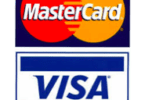Background
The recent CARES Act – the massive stimulus bill that sends $1,200 to most American – also greatly enhanced the unemployment benefit. I wrote many details about this in our original post and pasted them below at the end of this post.
Briefly, the CARES Act adds $600 per week, on top of what the state gives, through July 31, 2020. It also extends the amount of time one can be on unemployment. It also allows unemployment benefits for furloughed workers, self-employed, and gig workers.
A lot of people will end up getting their full salary. For example, if the state gives $400/week, you’ll now get $1,000 per week. That would be roughly full salary for someone who makes $50,o000 or less per year.
Unemployment benefits are run through each state individually. Google to find your state’s unemployment website. The $600 should eventually get to you as part of your regular unemployment payment from the state, it’s not something you file for separately.
It’ll take a while for each state’s unemployment’s office to sort through all of this and actually get the money sent out, and their websites are all getting slammed making it hard to even file a claim.
Each state offers a different max Unemployment Benefit, ranging from under $200 to over $1,000. Check out this list of amounts in all states here; tack on $600 and you’ll know the max under the new stimulus bill.
Here’s a handy link to find Unemployment Benefits website and information for each state.
Employees
Employees who were fired or furloughed can file for unemployment. Even those who lost partial work can file. For example, if your company reduced everyone’s time and pay by 50%, you should be eligible. That is the standard unemployment rule, per my google search, and should work now too. It’s not clear exactly how the $600 extra will factor in such a case, and likely will have differing results depending how each state enacts it, but certainly worth filing.
Likewise, if you were laid off or furloughed and are working temporarily at a lower income somewhere else, you should able to file, as per standard unemployment rules. Again, exactly how it’ll all play out is unclear, and likely will depend state-by-state on how they enact the CARES Act, but certainly worth a shot.
If your company still has you working full time, at a reduced salary, I’d assume that you can not file since it’ll be treated like any employee who gets their pay cut. If the pay-cut is clearly a temporary thing for a few months, maybe then it would be possible to file for unemployment. Could be worth a shot.
Self-Employed
The CARES Act extends unemployment benefits to the self-employed as well. This included gig workers, such as Uber and Lyft drivers, and would include someone with an Amazon reselling business or a consulting business.
Reuters reports that self-employed are hitting a wall in their efforts to apply for the coronavirus jobless benefits promised by Congress as state agencies say they are not ready to handle a class of workers who are totally new to the U.S. unemployment system.
A lot of states have clear guidance for self-employed telling them to hold off until they have the systems in place to handle those claims. From what I understand, states usually pay out unemployment benefits retroactive to when there was loss of work, irrespective of when you file. So hopefully you’re not losing money due to the fact that you aren’t yet able to file. But it might be that some states only pay out from when you file.
Regardless, it’s probably a good idea to wait until your state issues clear guidance for self-employed; if you try applying by choosing the wrong option it might hold things up further, even after they have the systems in place to deal with self-employed claims.
The issue with self-employed is that they have no steady income and little documentation of income, so it’s very hard for states to issue them unemployment. Let’s take an example of an Uber driver who has good weeks and bad weeks, sometimes earning $200/week and sometimes earning $1,000/week. Do they give them based on the lowest amount? Highest amount?
Uber drivers at least have clear documentation on their history of earnings. But take a consultant who files his earnings annually and has little documentation or clarity on what he earns each week or month. How do you calculate his ‘salary’ to give him the benefit?
I suppose the best way would be to take 2019 income and divide it by 52 to get their weekly income. In any case, the states are obviously grappling with this, plus, they don’t have the systems in place to deal with it. We can only hope it gets sorted out over time, one state at a time.
Partial Work
Another major question is the self-employed who have a partial loss in business. For example, an Uber driver who usually makes $1,000/week and now is making $200/week. Or a consultant who has much less work now. Or an Amazon reseller who is selling much less products how.
Since regular employees are eligible for unemployment when they get their time cut, self-employed who are working less due to lack or work should be eligible for partial unemployment as well. Again, it’s not clear exactly how this will play out, but you can try filing a claim when the states eventually get the benefit working out for self-employed.
Employee + Business
A lot of people are asking about someone who has a W-2 job and also has a business, and they lose or the other, are they eligible for unemployment benefits?
My assumption would be that they would be eligible, similar to what we discussed above about someone who gets cut from full time to part time. And if it works when someone loses they W-2 job while retaining their business, it should work in the reverse scenario as well (under the new stimulus bill which treats self-employed like employees) that if someone loses their self-employment income they would be eligible even if they still have a W-2 job.
Ultimately, it might be up to each state’s unemployment office to address both scenarios. I’d guess that if you still have a full 9-5 job, and just lost your side hustle self-employment income, they would not give you unemployments benefits. However, if you work 20 hours a week for a company as a W-2 employee, and then you are an Uber another 20-30 hours per week, then they might consider it as two part-time jobs and give you unemployment benefit if either of the two is lost, just like someone who went from being a full time employee to a part time employee.
Wrap Up
Please don’t rely on information in this article and do your own research.
I know many people who were laid off partially or fully and are looking into unemployment. Also quite prevalent is the scenario of employees or self-employed who have cut back on hours/pay. Hopefully this article adds a bit to the discussion. More questions than answers in this post, but it’s questions people keep asking and no one is addresses, so I thought it was worth writing up the issues.
Unemployment Enhancements
I’m pasting here many of the details of the enhanced unemployment benefit from our original post:
Increased benefits include:
- Provides enhanced unemployment benefits through July 31, 2020. This increases your unemployment check by $600/week, on top of what the state regularly gives, for 4 months. (Someone can potentially get their full salary amount after being fired, with no ‘pay cut’, depending on what your salary was. Or even more than their salary.)
- Extends unemployment 13 weeks longer than usual rules. Most states offer 26 weeks, and that will now be 39 weeks. This continues through December 31, 2020.
- Extends unemployment to self-employed workers as well. That would include gig workers like Uber drivers. (I assume these workers will file for unemployment through the regular state unemployment website/office, but I’m not certain of this.)
- Extends unemployment to furloughed employees as well. The added goal here is that businesses should not fire employees, instead leave them on as furloughed.
Other Enhancements
Some other enhancements to unemployment coverage with the new bill:
- The bill removes the ‘waiting week’ provision to allow unemployed workers to get benefits immediately.
- Part time workers who are laid off are now eligible for unemployment.
- Those who did not work long enough and are laid off are eligible as well.
- Those who are sick, those who must quarantine, and those who must care for a sick family member are eligible.
- If you children’s school/day-care is shut down and that stops you from being able to go to work, you are eligible for this new unemployment benefit.
- People who are already on unemployment for reasons outside coronavirus will be eligible for the extra 13 weeks and for the extra $600 as well. People who exhausted their unemployment time limit can sign up again for the extra 13 weeks.
Workers who are receiving paid sick leave or paid family leave would not be covered. People looking for a job who can’t find one are not covered either; it only covers those who have a job which they lost or which they temporarily can’t do their job.
Related:
- Stimulus: Government To Send Out $1,200 Checks/Deposits To Most US Residents; Expanded Unemployment & More
- US Stimulus: Should You File Your 2019 Tax Return Now?
- Stimulus Bill Adds $300 Charitable Contribution Deduction For 2020 & Beyond
- Stimulus Bill Forbids Credit Agencies From Issuing Negative Marks For Certain Deferred Payments
- Stimulus Bill: Making Sense Of The Options For Small Businesses & Employers (Grants + Loans)
- Stimulus Checks: People Who Don’t File Taxes Can Register Their Bank Info With IRS-TurboTax Online Portal To Get Their $1,200
- Stimulus: EIDL Grant For Small Businesses Will Be $1,000 Per Employee, Per SBA Clarification
- IRS Now Lets You Check Your Stimulus Payment Status
- A Few Updates On Those $1,200 Stimulus Checks
- A Few Updates On The Small Business Grant & Loan Programs (PPP, EIDL Funding Round 2)
- IRS Website Finally Allows You To Add Bank Information For $1,200 Stimulus Direct Deposit
- Lawmakers Overhaul PPP Loan Forgiveness Program For Small Businesses
- EIDL Loan & Grant Program Reopens For New Applications






